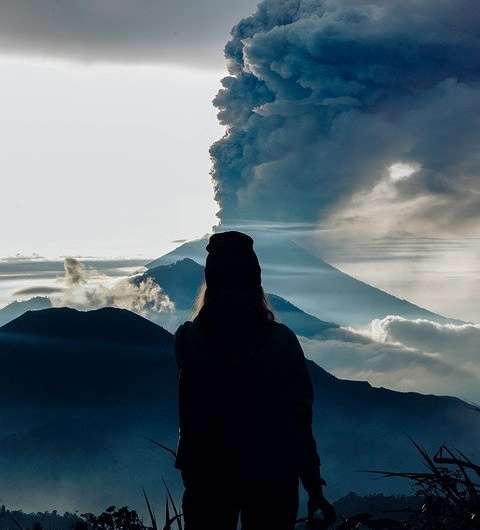Eruption of Mount Agung in Bali. Credit: Pixabay
Recently, Mount Agung in Bali erupted again, attracting considerable attention. A potentially very large eruption could also take place in Bali. Strong tropical volcanic eruptions (SVEs) like this not only pose serious human risk, but can affect Earth's climate.
The Pacific Walker circulation (PWC) is one of the most important circulation systems in the tropics. Changes in the PWC are associated with major changes in rainfall in many parts of the world, and related to extreme climate and weather events. A better understanding of how the PWC responds to SVEs is very important.
In a study recently published in Advances in Atmospheric Sciences, Ph.D. student MIAO Jiapeng, and his supervisor Associate Professor WANG Tao from the Chinese Academy of Sciences used long-term model results and reanalysis data to examine the response of the tropical PWC to SVEs. They found that the PWC showed a significant interannual weakening after SVEs.
Additionally, the team examined the mechanisms behind the PWC's response. "The cooling effect from the SVEs is able to cool the entire tropics. However, cooling over the Maritime Continent is stronger than that over the central-eastern tropical Pacific following SVEs. Thus, non-uniform zonal temperature anomalies can be seen after SVEs during this period. As a result, the sea level pressure gradient between the tropical Pacific and the Maritime Continent is reduced, which weakens the trade winds over the tropical Pacific," MIAO explained.
"Therefore, the PWC is weakened during this period. At the same time, due to the cooling subtropical and midlatitude Pacific, the ITCZ [Intertropical Convergence Zone] and SPCZ [South Pacific Convergence Zone] are weakened and shift toward the equator. These changes of the ITCZ and SPCZ also contribute to weakened trade winds over the tropical Pacific and the weakened PWC after the SVEs. Further experiments using a global general circulation model suggest that the stronger cooling over the Maritime Continent plays a dominant role in weakening the PWC after SVEs," MIAO added.
WANG further explained that they found a significant interannual weakening of the PWC after SVEs, both in observations and the model. This result is helpful in understanding the responses of atmospheric circulation to SVEs, and related air-sea interaction after SVEs.
More information: Jiapeng Miao et al, Interannual Weakening of the Tropical Pacific Walker Circulation Due to Strong Tropical Volcanism, Advances in Atmospheric Sciences (2018). DOI: 10.1007/s00376-017-7134-y
Provided by Chinese Academy of Sciences























